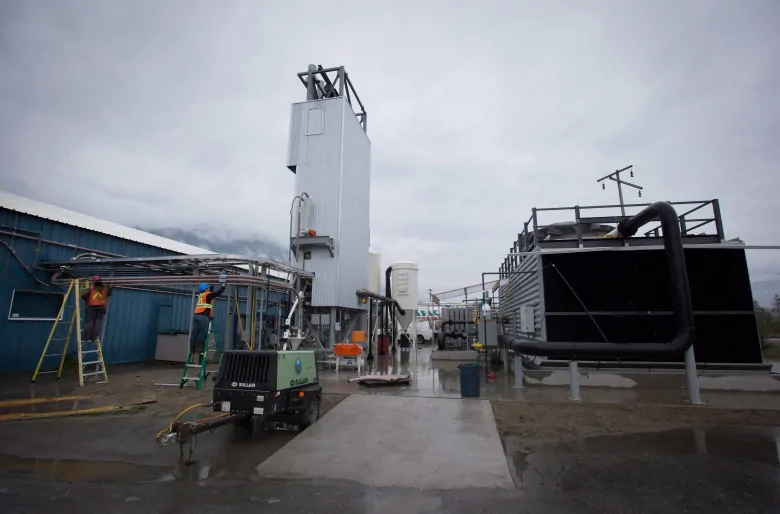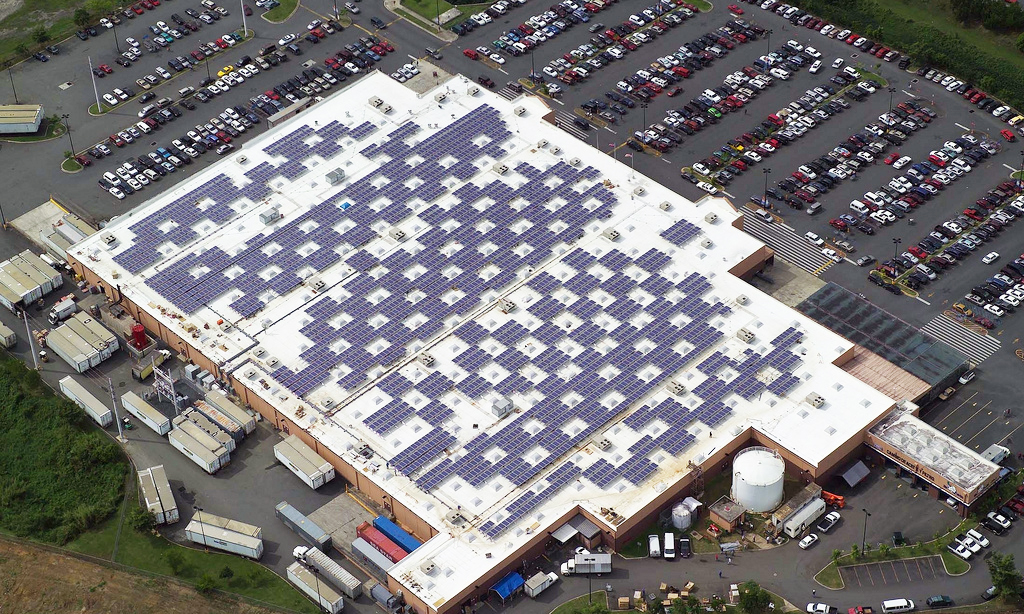There have been many global developments on the science of CO2 recovery from the atmosphere. Existing and future buildings use A/C systems for temperature control of ventilation systems. Large buildings move massive amounts of air during the course of a day.
At design rates of 10 to 20 cfm (cubic feet/minute) per person large assemblies or office towers rates of ventilation can reach up to 100,000 cfm or more per building. This air is required to be temperature controlled, which is achieved by air conditioning units, which extract heat energy from the air stream and reject this heat to the outside (a heat pump can also operate in reverse mode, heating the inside air stream and absorbing heat from the outside air).
The fan motors used to move the conditioned air consumes considerable electricity to operate as do the outside air fans used to cool the A/C system. The outside cooling (heating) loop is operated by forcing air through fin-tube radiators which contain pressurized refrigerant circulating in a closed loop cycle.

It has been proposed to incorporate carbon capture and sequestration in these systems and create a new, clean energy source which can be re-introduced to the economy as a fuel and material feed-stock for a variety of industries.
However, the process is not without certain drawbacks. One major hurdle is finding the additional energy required to further process the captured CO2 into a viable fuel. The process requires electrolysis of water and other energy inputs to refine the captured carbon. It is proposed that PV Cells would be a good energy source for the process.
“[…] In a new analysis, scientists argue for using air conditioning units to capture carbon dioxide straight from the atmosphere and transform it into fuel. The idea is that these renewable-energy powered devices would lower atmospheric CO2 and provide a scalable alternative to oil, natural gas and other fossil fuels.
The conversion tech would first take in CO2 and water from the air. Then, an electric current would split the water into hydrogen and oxygen. Finally, combining the hydrogen with the captured CO2 would produce hydrocarbon fuel.
It’s all theoretical for now, but the technology for each step of the process already exists. Companies like Climeworks in Switzerland, Siemens AG in Germany and Green Energy in the US, have commercialized technologies that separately capture CO2 directly from the air, isolate hydrogen from water and produce fuels. But a complete system that puts all of the pieces together, is lacking. The fact that the components are available, however, means “it would be not that difficult technically to add a CO2 capture functionality to an A/C system,” the authors write.
If air conditioners were equipped with the appropriate technologies, the researchers calculate Fair Tower, a landmark office building in downtown Frankfurt am Main in Germany, could produce 550 to 1,100 pounds of liquid hydrocarbon fuels every hour, or about 2,200 to 44,00 tons per year. When the researchers extrapolated on this calculation they found the five cities in Germany with the largest office space could together produce 2.6 to 5.3 million tons of fuel each year, the team reports Tuesday in the journal Nature Communications. […]” (2)
- https://www.cbc.ca/radio/quirks/may-4-2019-brain-resuscitation-hippos-supply-algae-skeletons-slug-surgical-glue-and-more-1.5119885/how-air-conditioners-could-keep-you-cool-and-capture-carbon-1.5119911
- http://blogs.discovermagazine.com/d-brief/2019/04/30/could-air-conditioners-convert-atmospheric-co2-to-fuel/#


 Hybrid Electric Buildings are the latest in developments for packaged energy storage in buildings which offer several advantages including long-term operational cost savings. These buildings have the flexibility to combine several technologies and energy sources in with a large-scale integrated electric battery system to operate in a cost-effective manner.
Hybrid Electric Buildings are the latest in developments for packaged energy storage in buildings which offer several advantages including long-term operational cost savings. These buildings have the flexibility to combine several technologies and energy sources in with a large-scale integrated electric battery system to operate in a cost-effective manner.

_1.png)





